Kielder Stone
I’ve previously been up to Kielderhead Wildwood to look at the William’s Cleugh Pines, but on that day the weather was really too poor to go up onto the high fells and have a look at the Kielder Stone.
So today I decided to head up there, and also take a look at a few other of the Named Stones in the vicinity. Rather than take a sensible, well-marked path from Kielder Castle up to Deadwater Fell, I took a shortcut direct through forest rides, which always works out so well.
It started off fine on the forest tracks in the sunshine, but once I headed up, the rides turned into probably the most difficult I’ve ever had to negotiate, with huge fallen trees blocking the way.
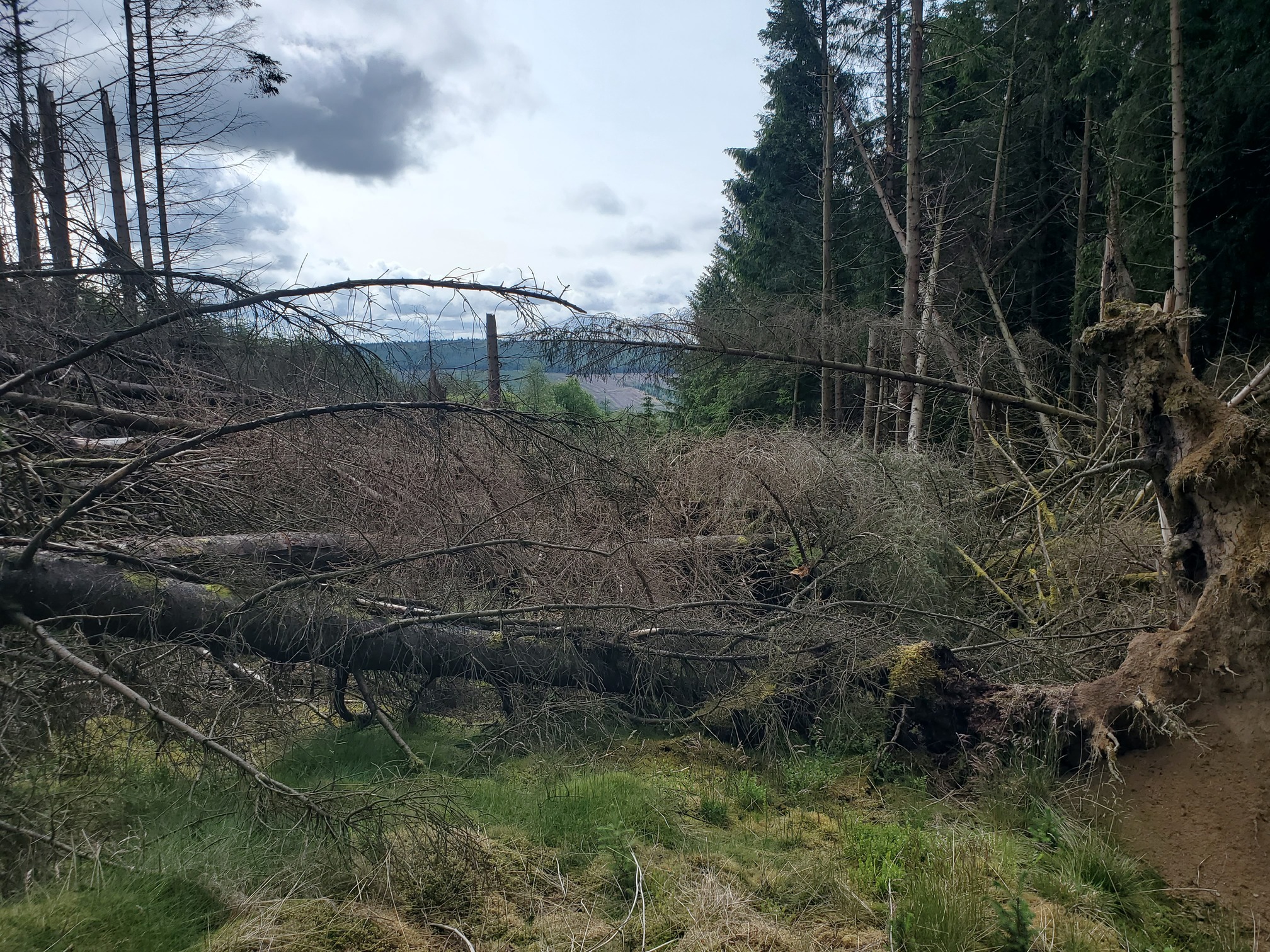 |
|---|
| hmm |
I eventually got through, enjoyed the views of the things on top of Deadwater Fell, then as it started to rain, I followed some more forestry paths through newly planted plantation to the first thing of interest. This is “Traveller’s Rest”, marked on all the OS maps, but strangely not in the list of Northumberland Named Stones. The OS Names Book describes it as
“A remarkable Cairn of Stones on West Keilder Moor well Known by this name which appearaently originateds from the Shelter it affords to people travelling over the hills from Scotland to England and vice versa.”
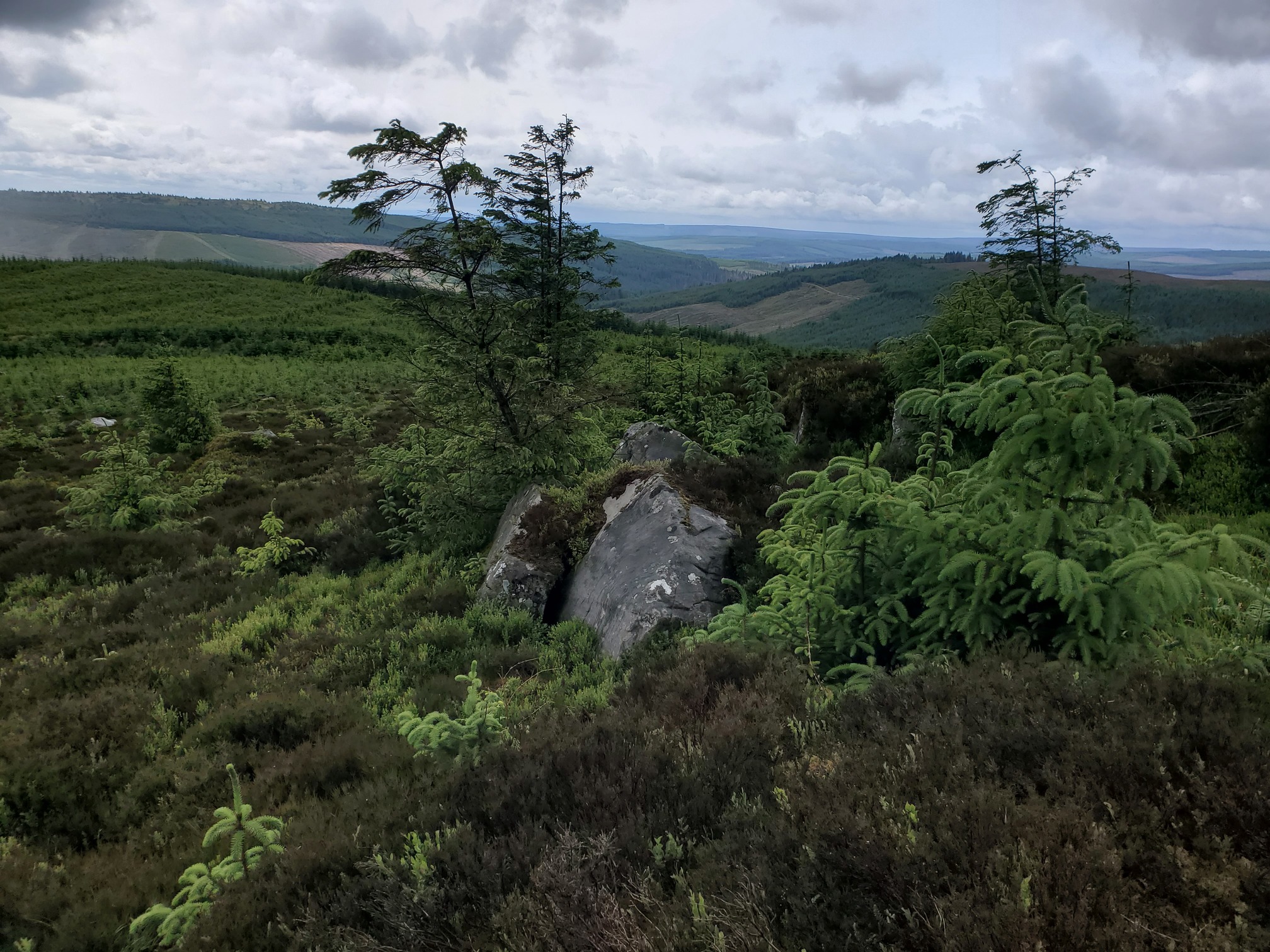 |
|---|
| The Traveller’s Rest |
From here it wasn’t too difficult to get up to the forest edge. A deer fence came into view - fortunately it was an old one in the process of being taken down. I headed for the first of the Named Stones, the Hanging Stones, and with the recently felled forest I could see down to the Leaping Stones.
 |
|---|
| The Leaping Stones (a rock outcrop) can just about be seen in the centre of the image |
Pleased to have ticked those off, I started uphill but a little later as I checked my map, I realised I was a bit short of the actual Hanging Stones. Soaked by the rain and the damp vegetation, I could not be bothered turning back for them, so instead I pressed on to these rocks, which look suspiciously standing stone-like, but could be natural?
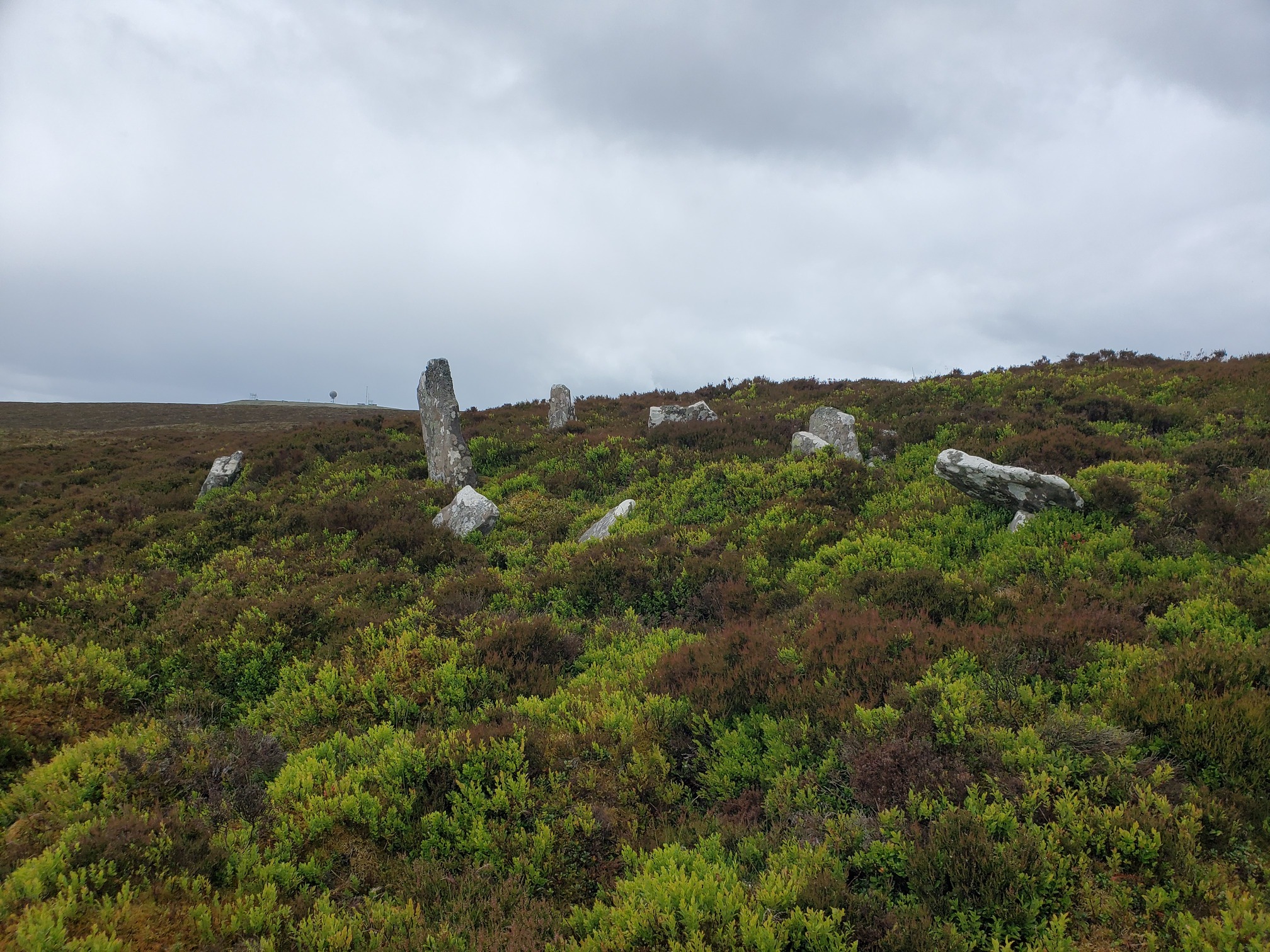 |
Continuing uphill, it was a tough walk through the blanket bog vegetation, but eventually I reached the cairn on the top of Mid Fell and was able to pick up the vague track to Kielder Stone via Peel Fell. The track follows a very old fence line the whole way, and while it isn’t exactly on the border I wonder if it was originally installed as a border fence, but they didn’t get the location quite right.
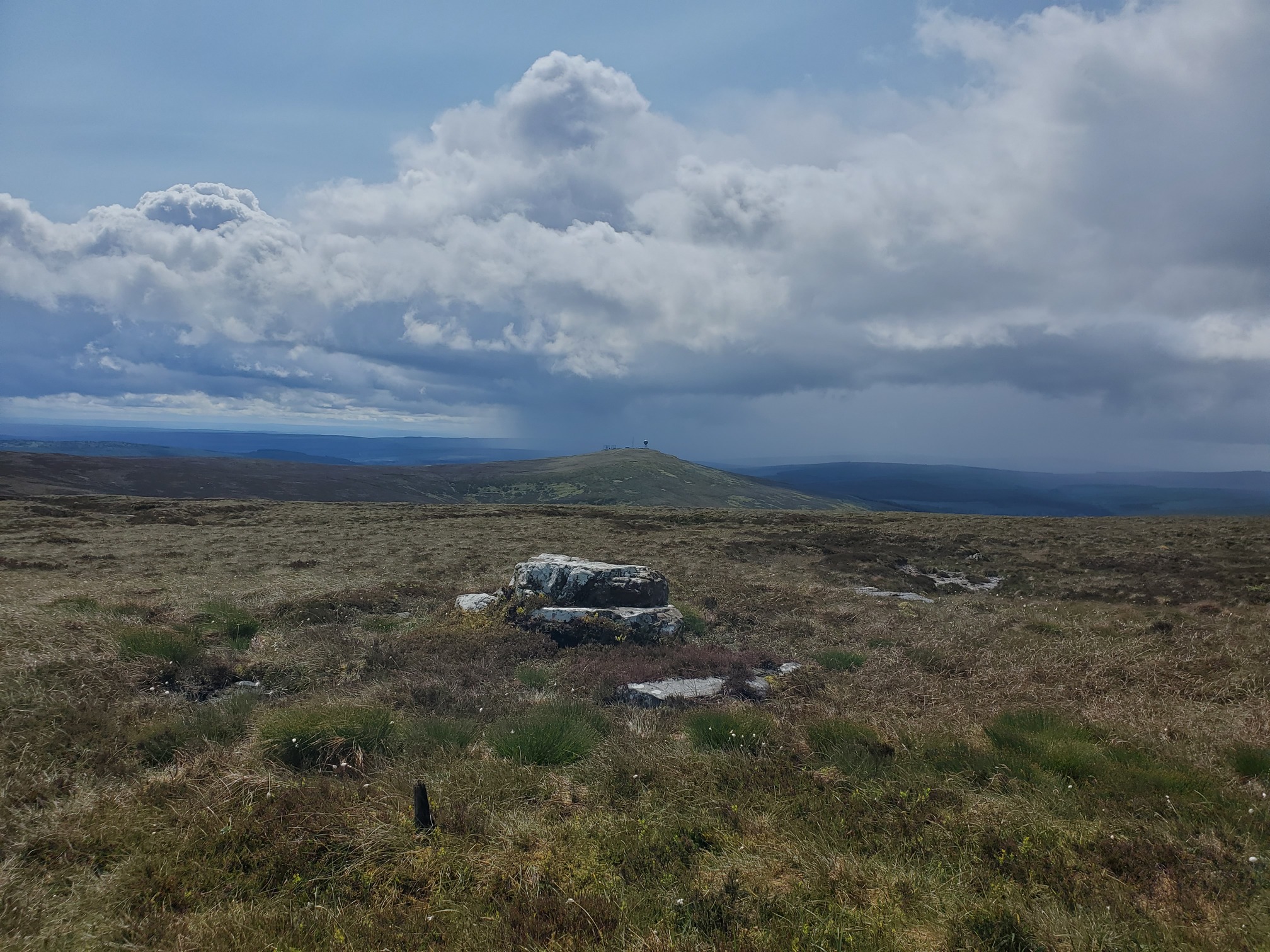 |
|---|
| View from Peel Fell summit to Deadwater Fell |
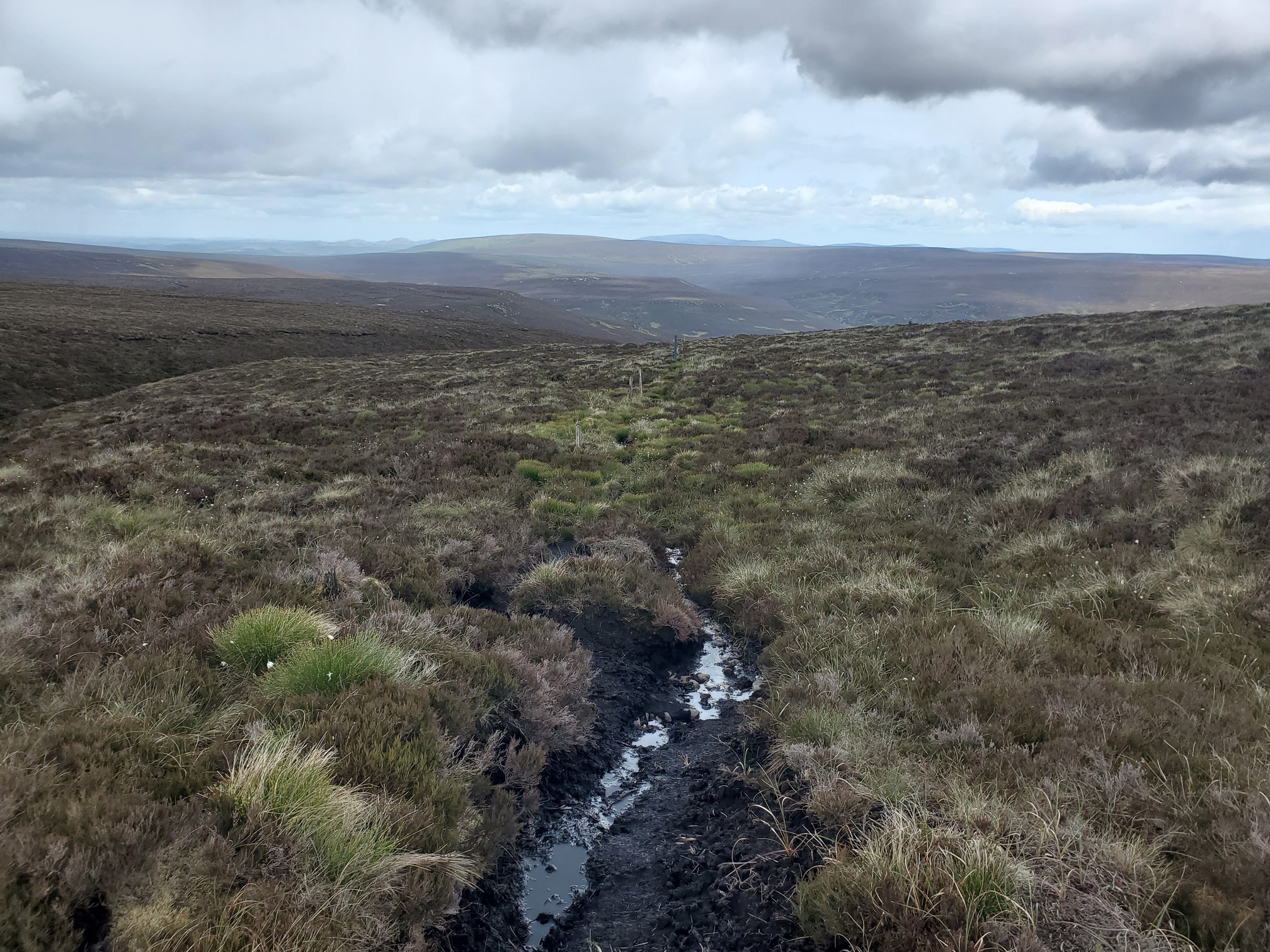 |
|---|
| Track following fenceline. You can see the Cheviot looming in the very far distance |
As the track descended to the Kielder Stone, I spotted two young wild goat kids sheltering underneath it, and mum grazing nearby. Wonderful! I’ve written about the goats before, when I spotted them further north along the Border Ridge. Normally when I see Cheviot Goats, they disappear into the heather as soon as they catch sight or smell of you. The two kids saw me, and hid round the corner as I approached, so I carefully and quietly sneaked round the corner with my camera ready.. only to disturb the full herd of about 25 beasts! This resulted in the worst best picture of Cheviot Goats -
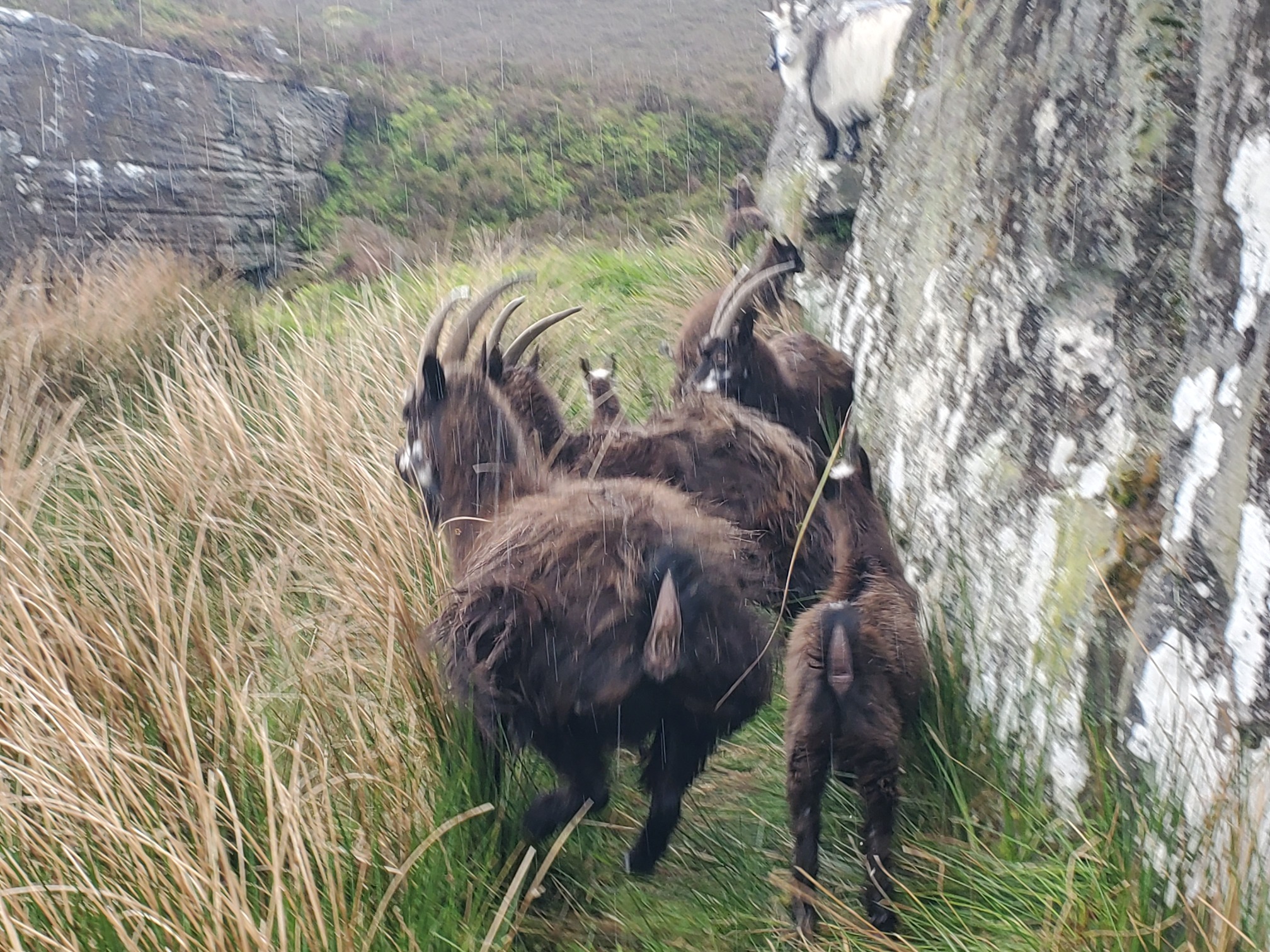 |
|---|
| majestic Cheviot Goats |
They continued to peer at me while I circled the rock (in a clockwise direction).
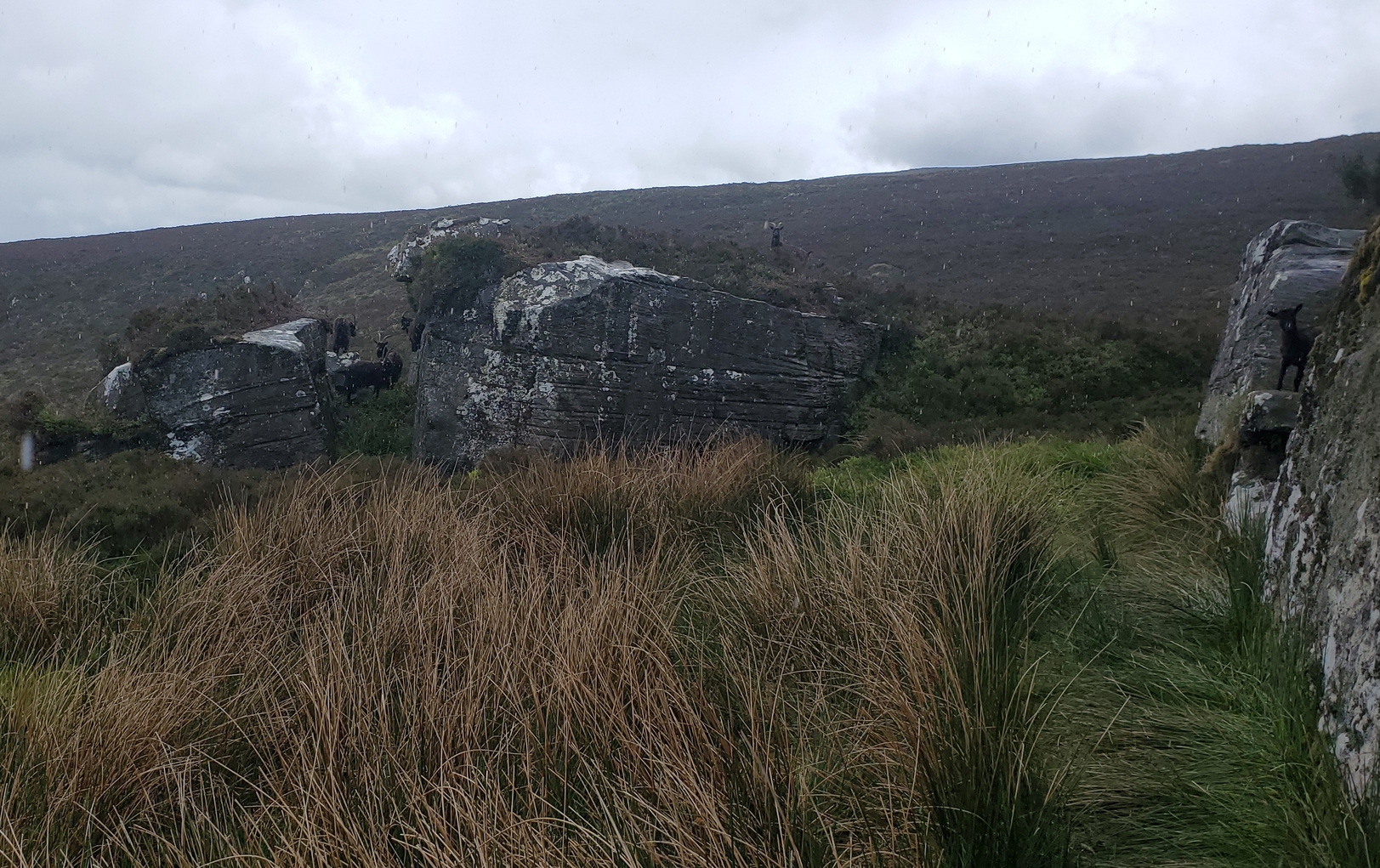 |
|---|
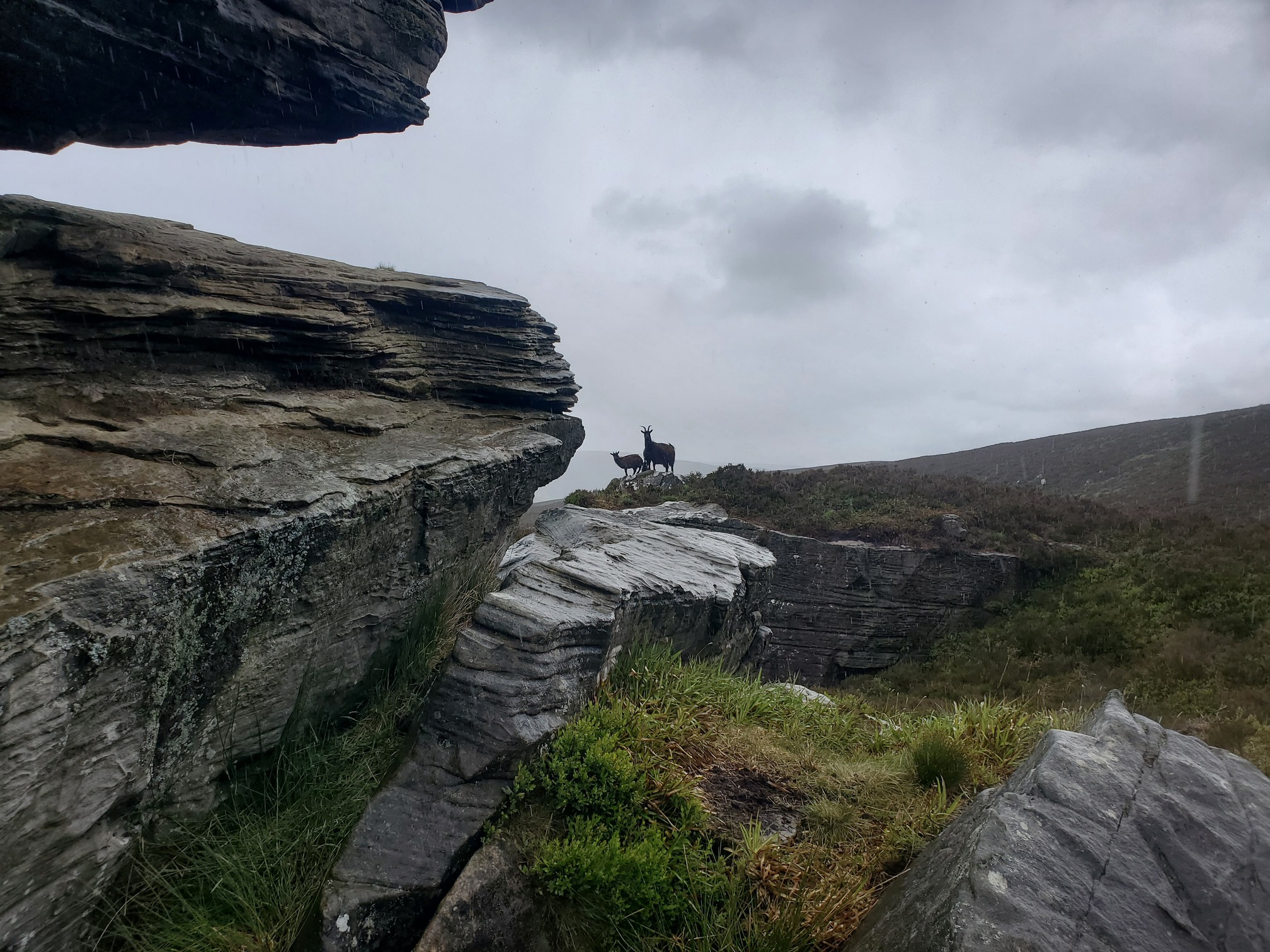 |
| more majestic goats |
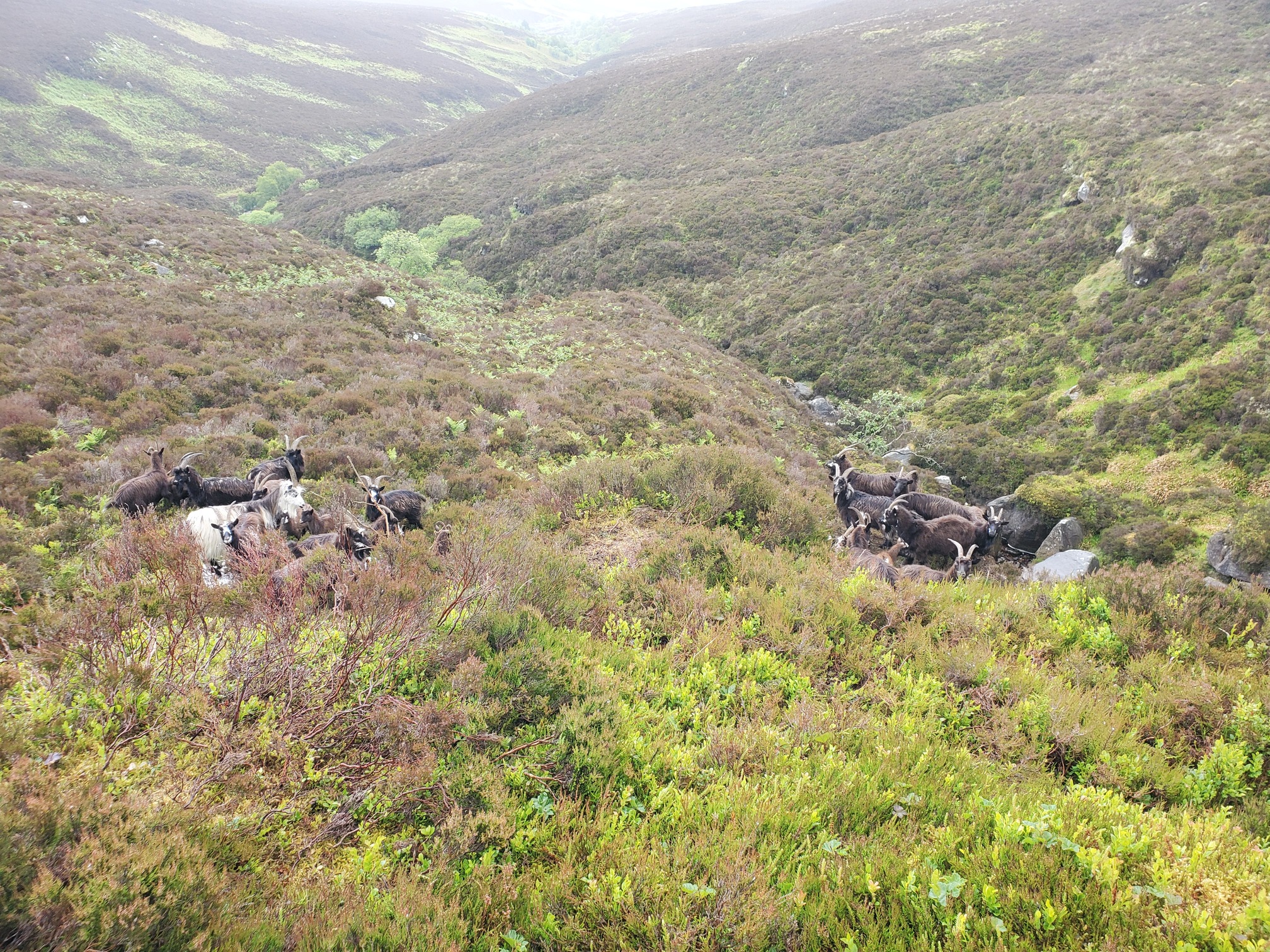 |
| Waiting for me to leave so they can go back to sheltering in the Kielder Stone |
The goats didn’t seem in any rush to head off, and were probably keen for me to leave to they could go back to sheltering from the rain showers at the Kielder Stone. A lovely wildlife experience, although they aren’t really wild (they’re feral, but a direct descendent from the goats brought over here 5,000 years ago) and they do cause problems with grazing and browsing on regenerating woodlands. Anyway - the Kielder Stone:
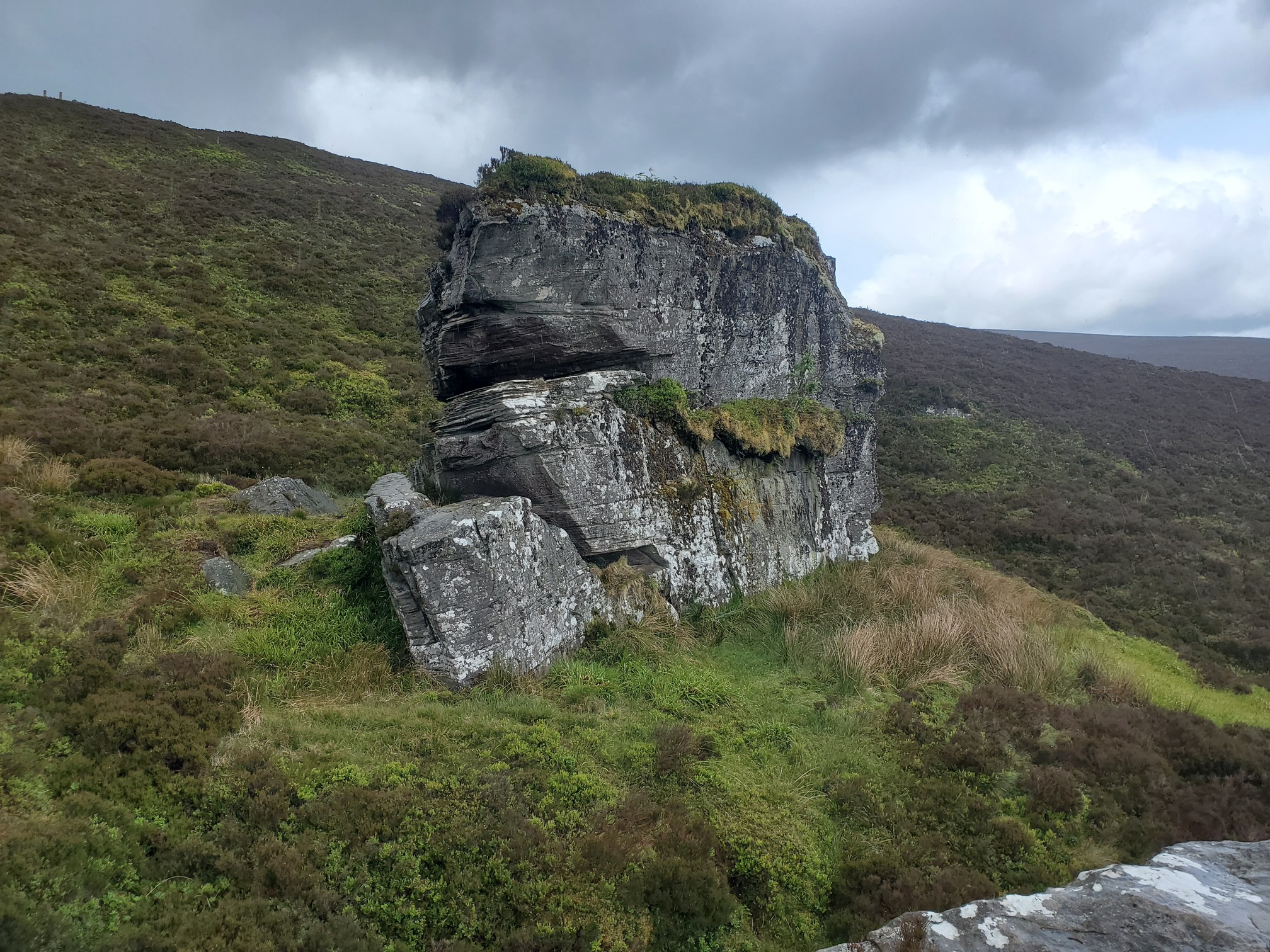 |
|---|
| The Kielder Stone |
This legendary erratic has many myths and tales associated with it, most notably that if you walk around it anti-clockwise three times, bad things will happen; you’ll invoke the wrath of the “little brown men of the moors” (probably the same Duerger who cause mischief at Simonsides) and/or your most evil wishes will be granted. Wilfred Wilson Gibson wrote a poem about it and Andrew Curtis has a bit more info on his Geograph page of the stone. Historically, the Wardens of the Marches - who were supposed to keep the peace in this lawless area before the Union of the Crowns - would leave notes for each other in the clefts of this rock.
Now in Kielderhead Wildwood, the going was extremely tough as I left Kielder Stone and followed the Kielderhead Cleugh and then the infant Scaup Burn. Despite this, the thick, rich vegetation and broadleaf woodland were absolutley delightful to see, and makes me wonder if this is how the landscape was 500 years ago when travellers were crossing the border and taking shelter at these rocky landmarks.
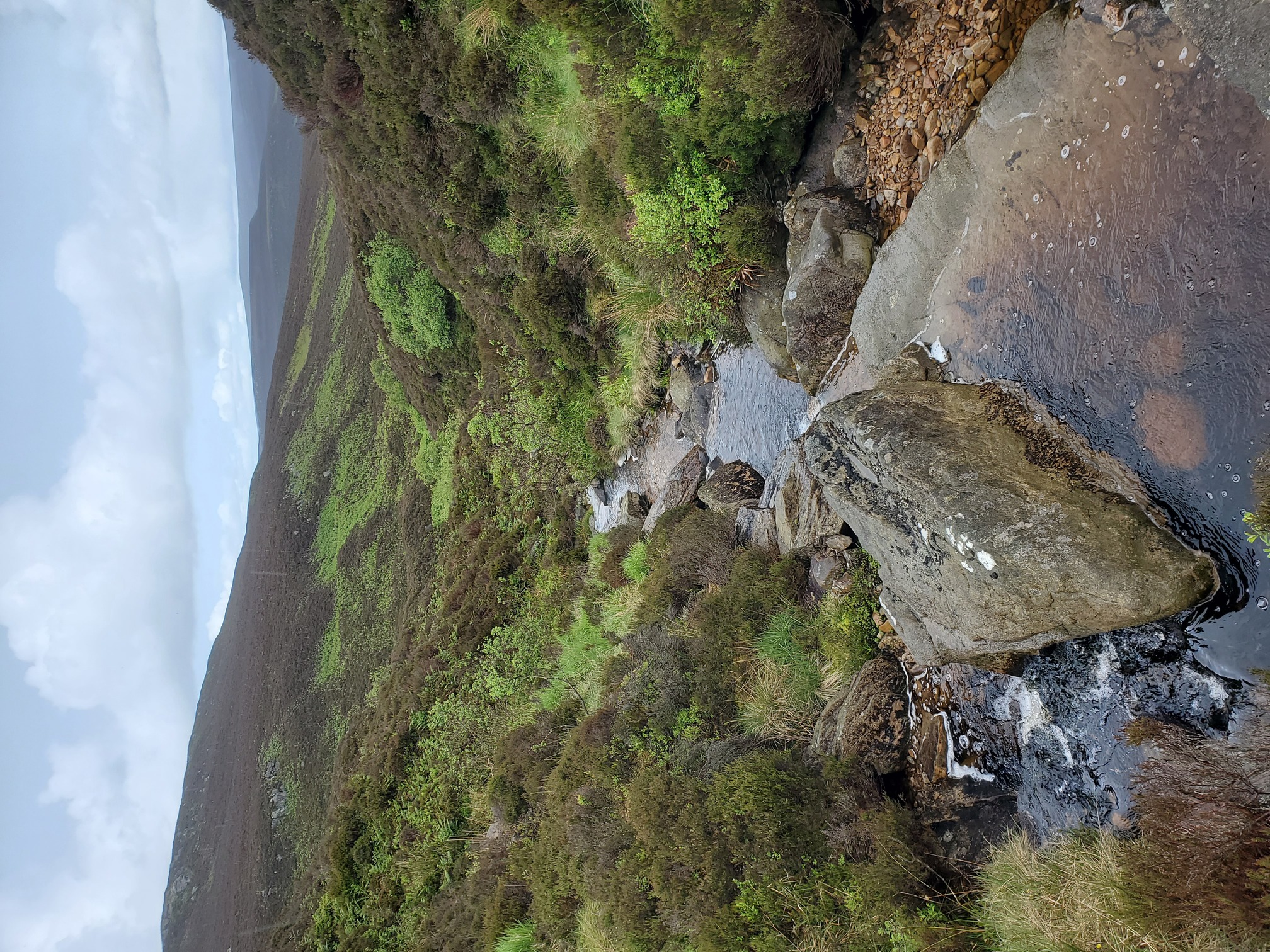 |
|---|
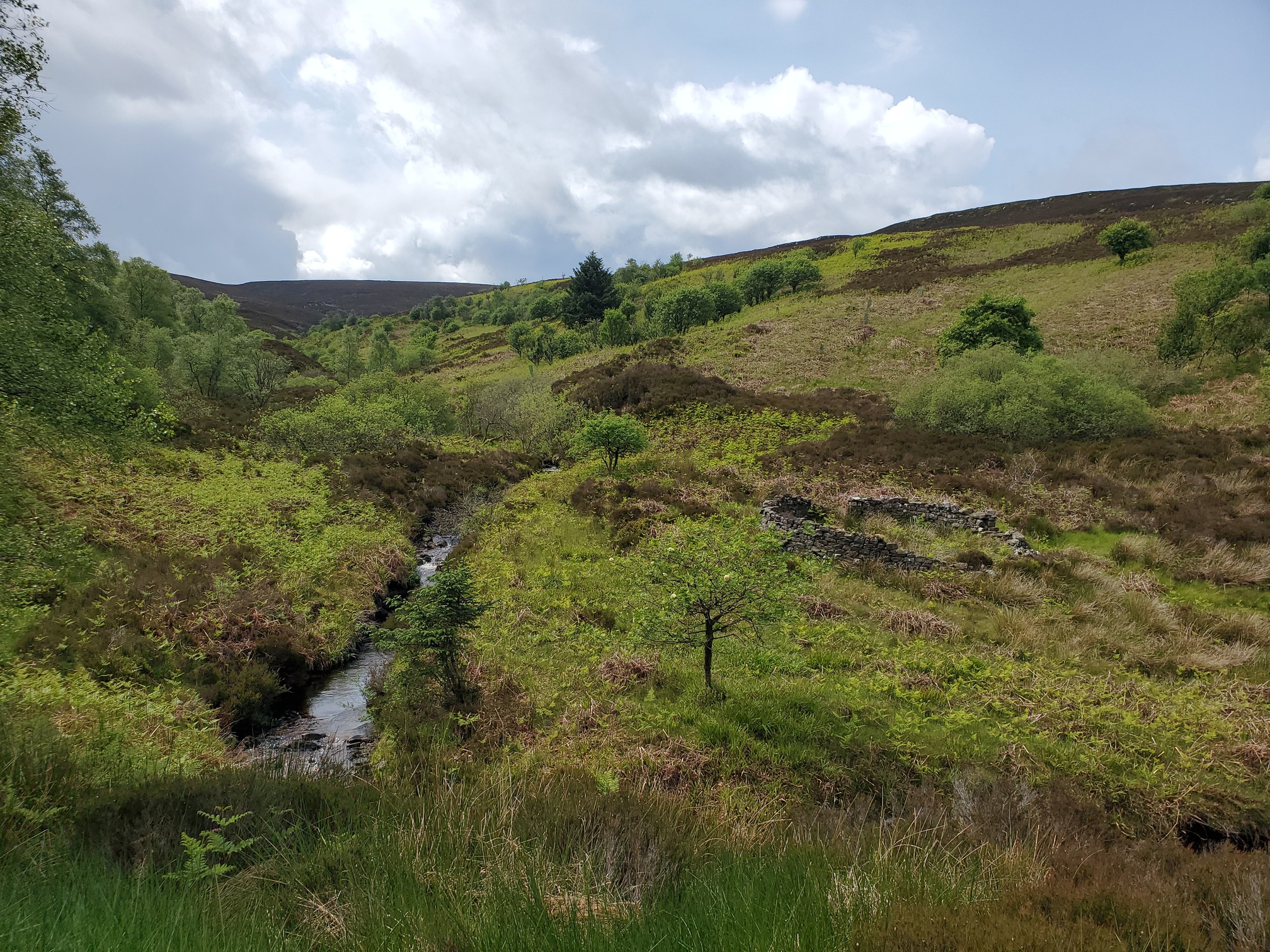 |
At the head of the Scaup, I saw a male Hen Harrier hunting, a real treat. I picked up some forestry paths through newly felled plantation, and from there reached the roads to follow the Scaup Burn back to the car park.
| Map of route taken |